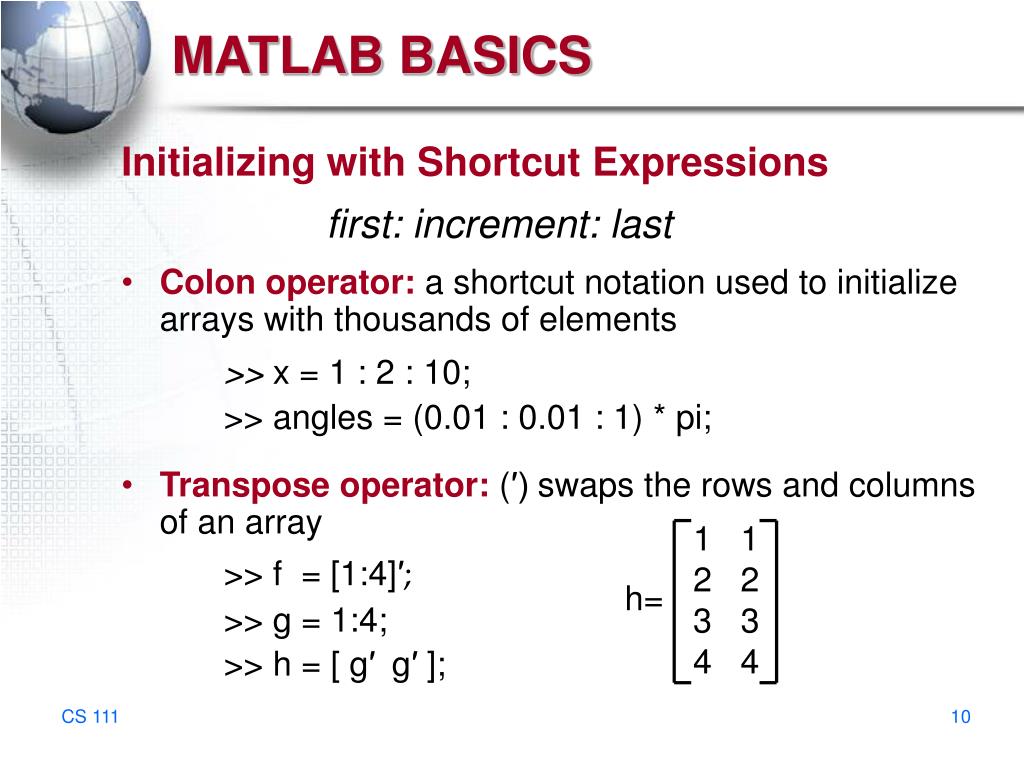

To make the point, consider the transpose of the above matrix: 1 2

The value in (1,3) can be referenced as A(5).Īs such, if you can construct a vector referencing the values in the transposed order, then you can assign the new values into the appropriate order and store them in a matrix of appropriate size. To reference the value in (2,2), you can reference it as A(2,2), or as A(4). Matlab stores values in a matrix in the form of a vector and a "size" - for instance, a 2x3 matrix would be stored with six values in a vector, and then (internally) to tell it that it's 2x3 and not 6x1.įor the 2x3 matrix, this is the order of the values in the vector: 1 3 5 I'm assuming that you are looking for a method that involves manually transposing the information, rather than using builtin functions. Here we discuss the introduction and examples of Matlab transpose for better understanding.As this is for a class, I won't give you an exact answer, but I will nudge you in the right direction. For a vector input, the transpose function will convert a number of elements in the vector as a number of rows of the output. Transpose function can be used for both real and complex matrices. We use the transpose function to compute the transpose of a matrix, i.e., interchange its rows and columns. Please note that since our input has 5 columns and 1 row, our output will have 5 rows and 1 column.Īs we can see in the output, the transpose function has interchanged our input vector rows and columns. Pass this input vector as an argument to the transpose function.

MATLAB TRANSPOSE CODE
C/C++ Code Generation Generate C and C++ code using MATLAB® Coder. In the above 2 examples, our input matrix was of real elements. This MATLAB function returns the nonconjugate transpose of A, that is, interchanges the row and column index for each element. In this example, we will use the transpose function to compute the transpose of a 3 x 3 real matrix.Īs we can see in the output, the transpose function has interchanged the rows and columns of our input matrix. Pass this input matrix as an argument to the transpose function.Īs we can see in the output, the transpose function has interchanged the rows and columns of our input matrix.In this example, we will use the transpose function to compute the transpose of a 2 x 2 real matrix. Given below are the examples of Matlab Transpose: Example #1 It will give the same output as the above syntax. For example, if B A' and A (1,2) is 1+1i, then the element B (2,1) is 1-1i. The operation also negates the imaginary part of any complex numbers. T = M.’ is another way of computing the transpose. The complex conjugate transpose of a matrix interchanges the row and column index for each element, reflecting the elements across the main diagonal.T = transpose (M) is used to compute the transpose of the input matrix ‘M’, i.e., it will interchange the rows and columns of the matrix ‘M’.Hadoop, Data Science, Statistics & others


 0 kommentar(er)
0 kommentar(er)
